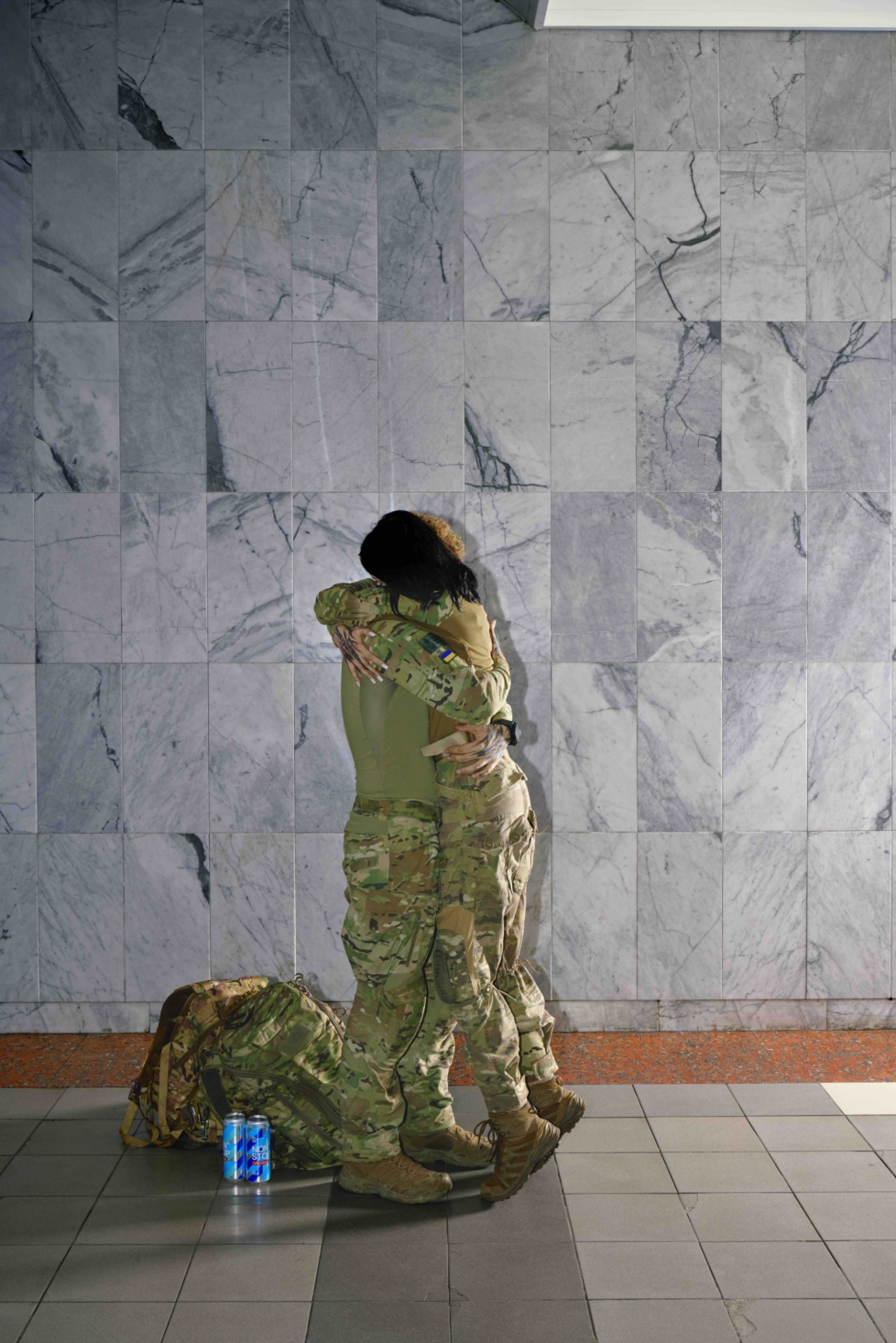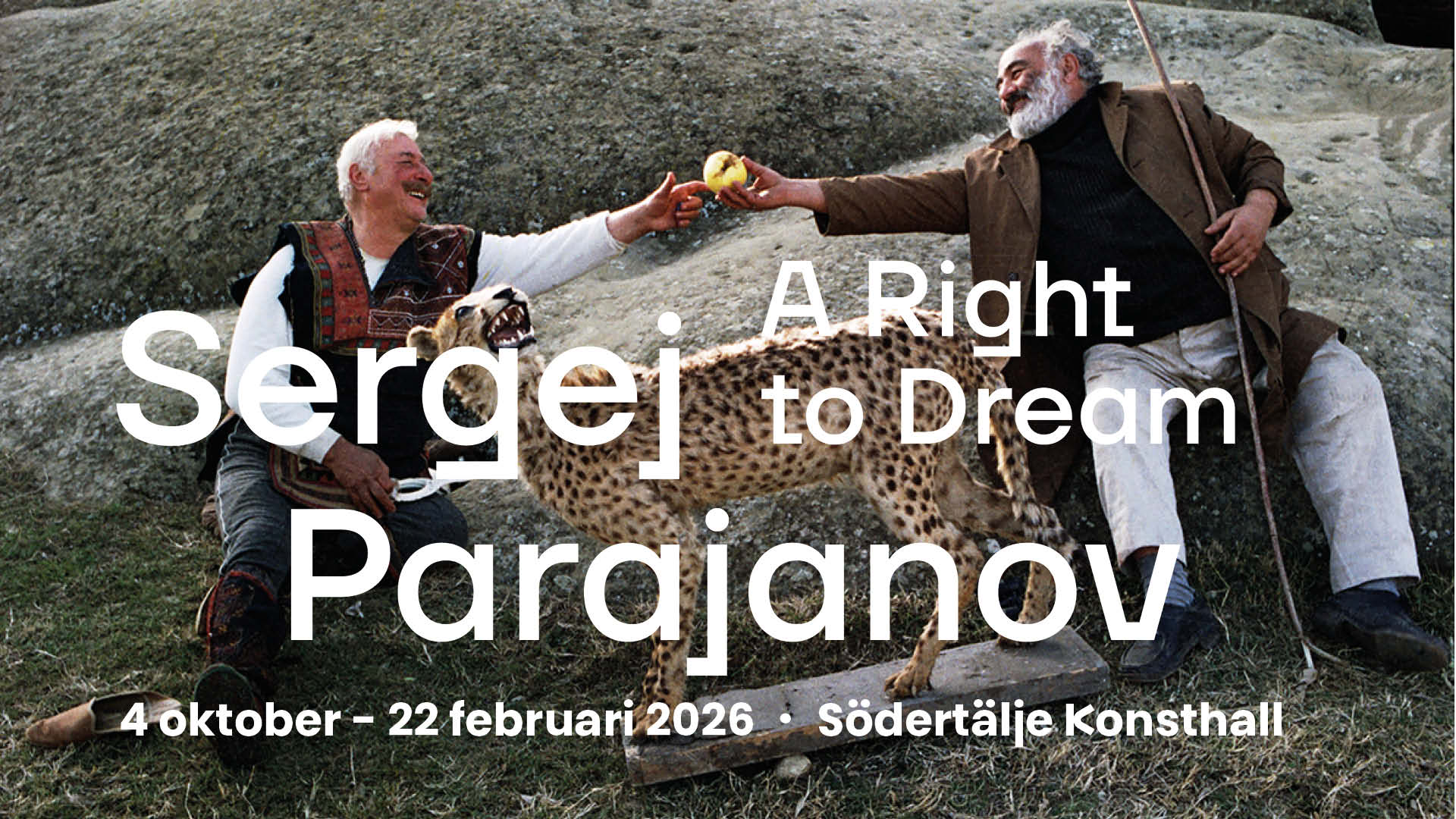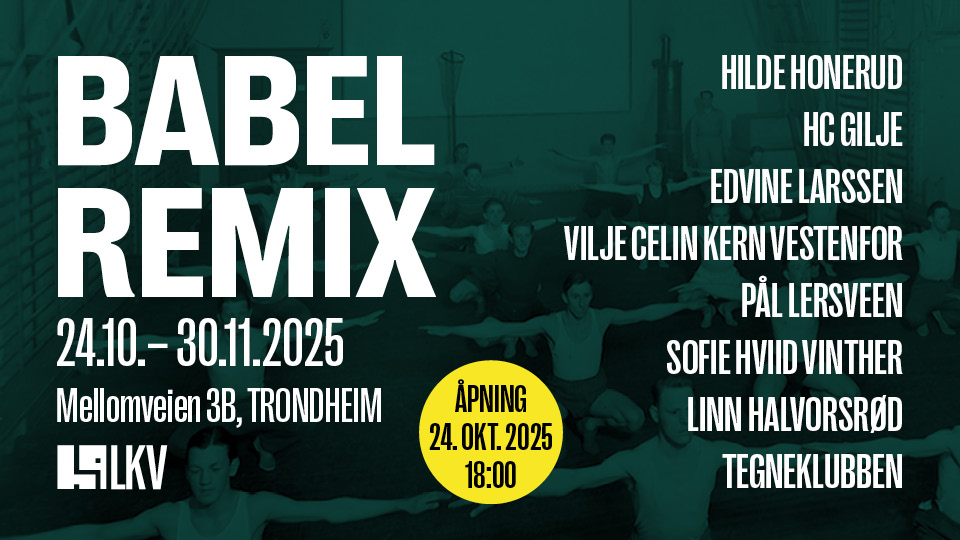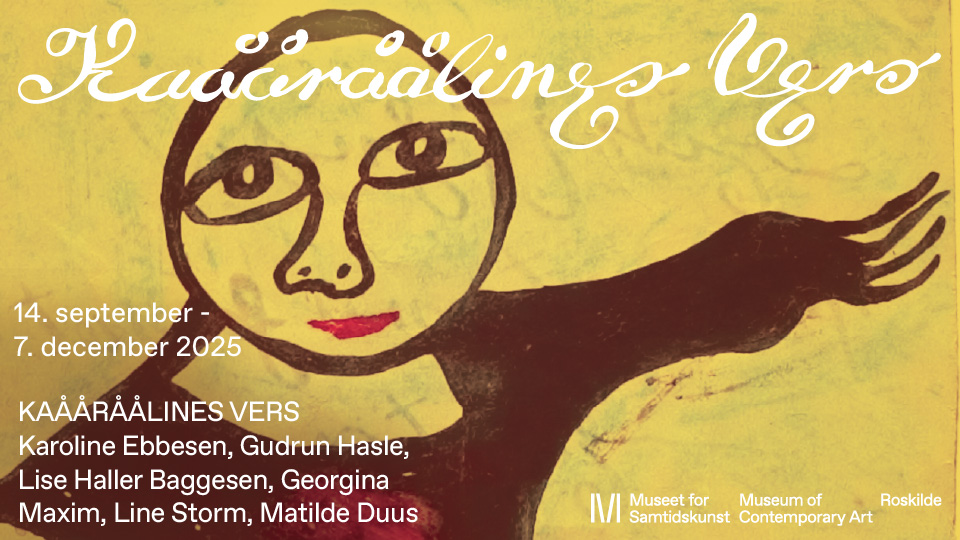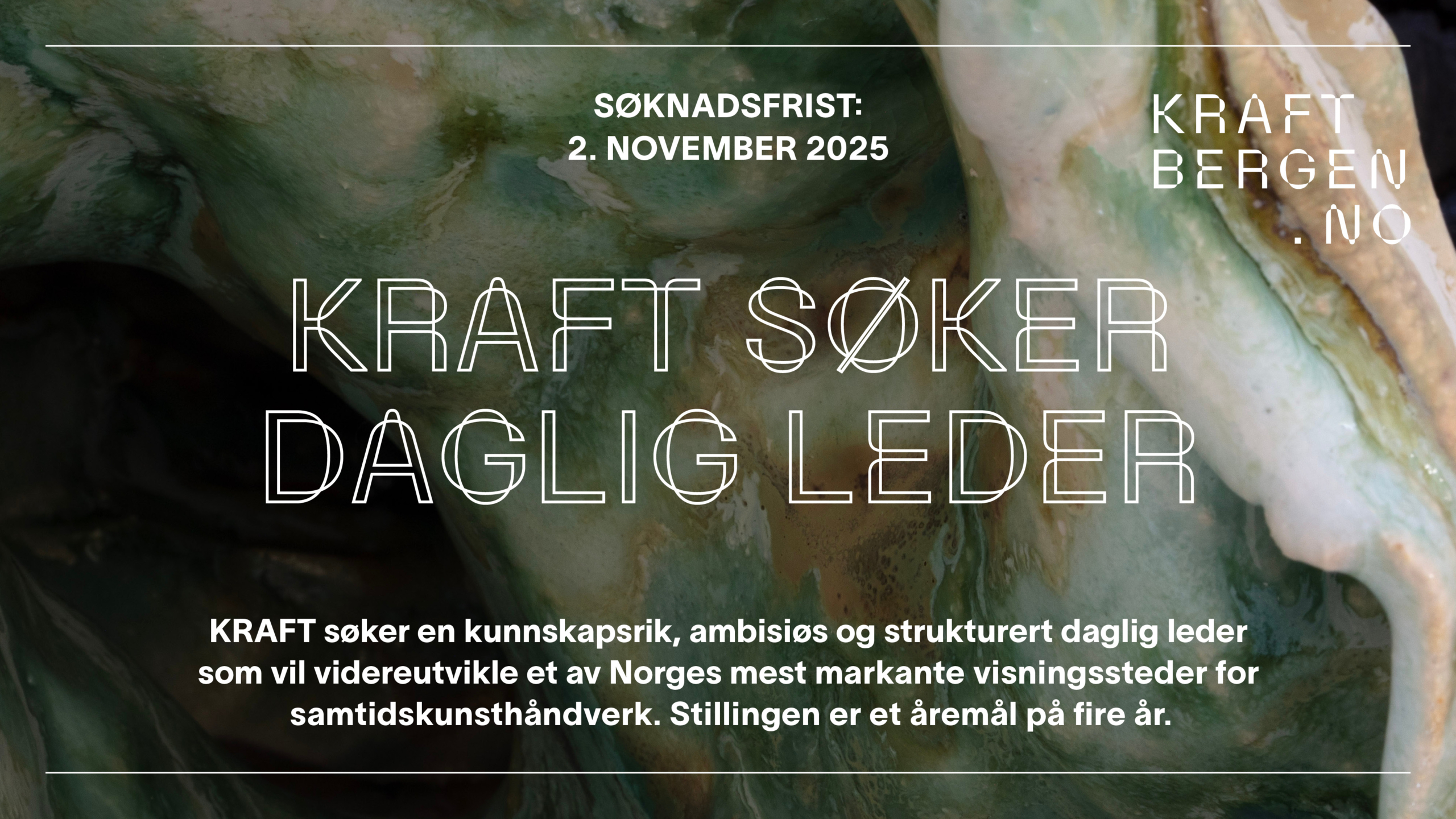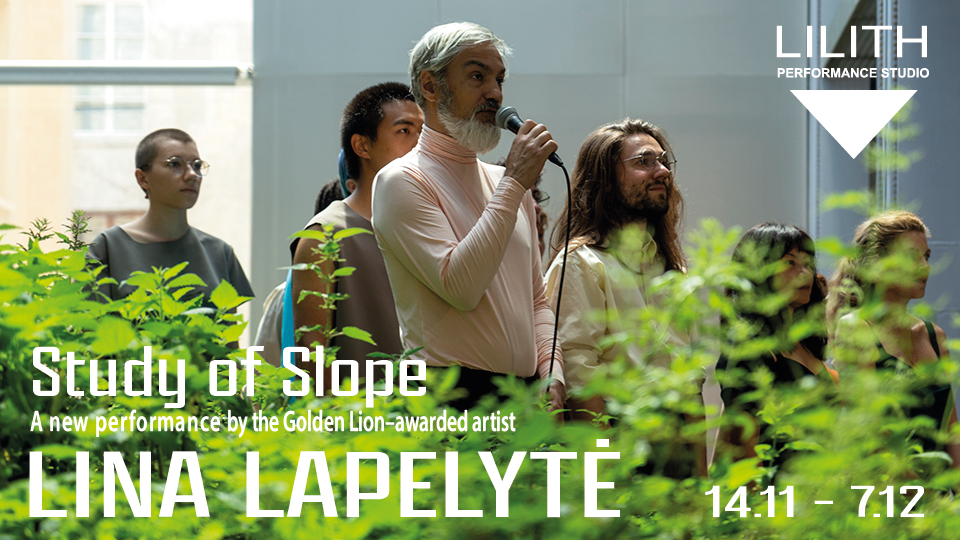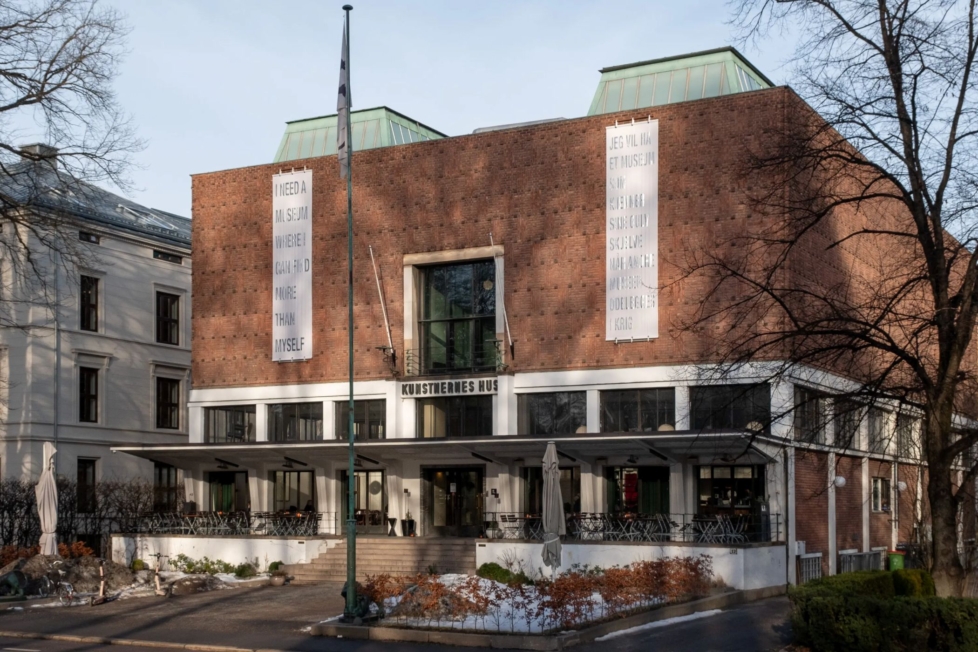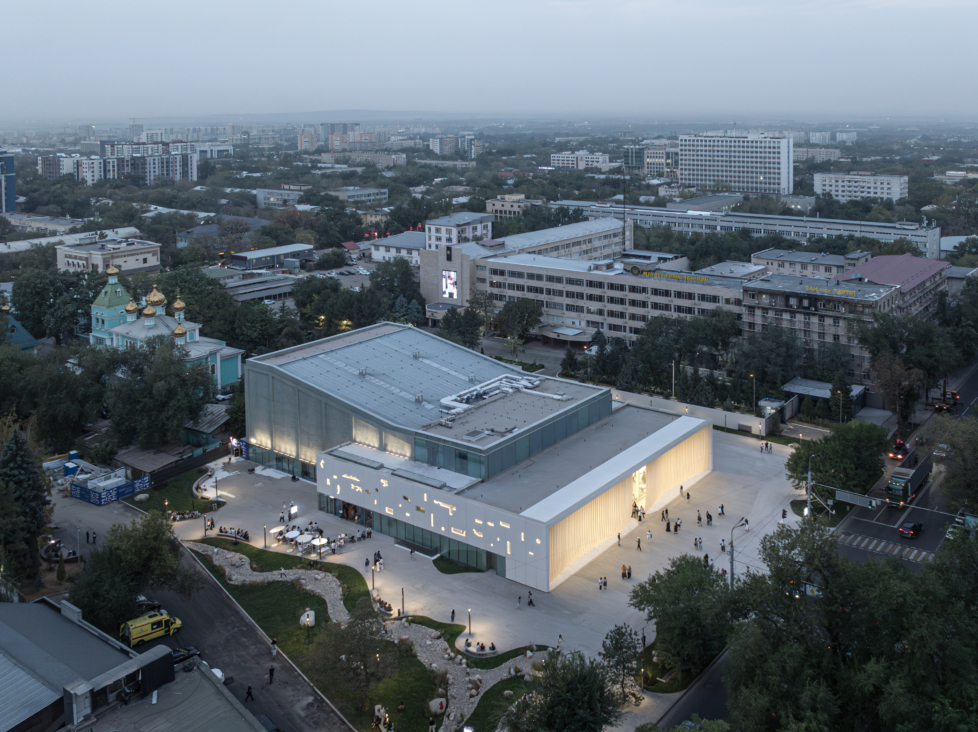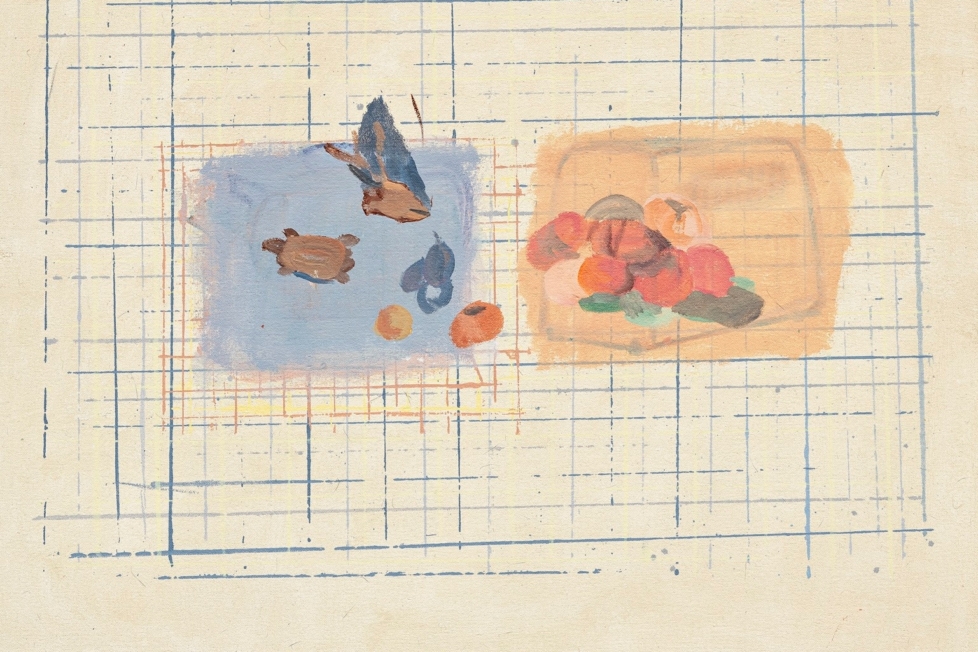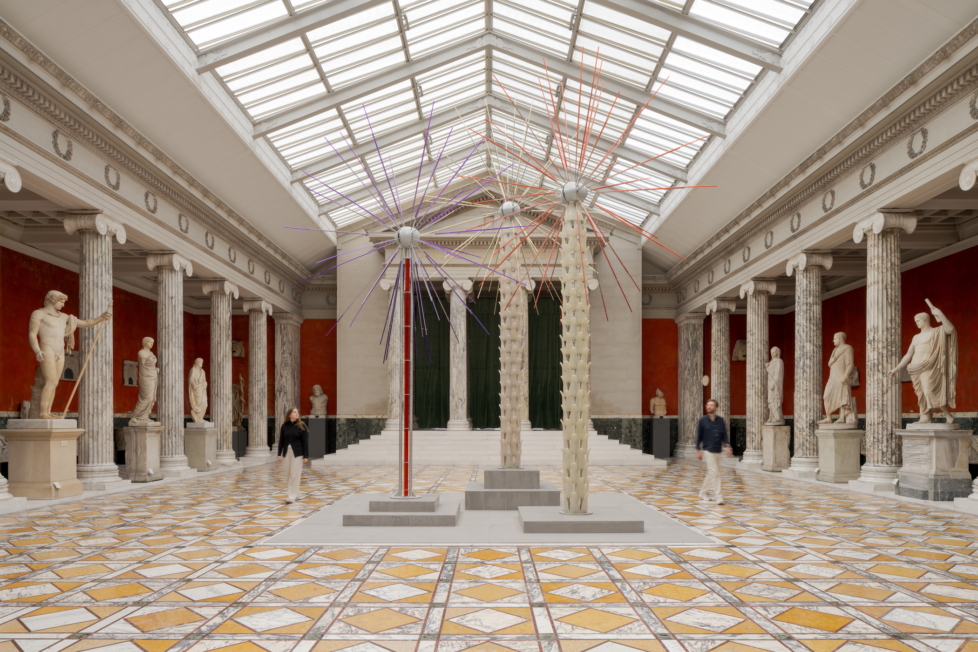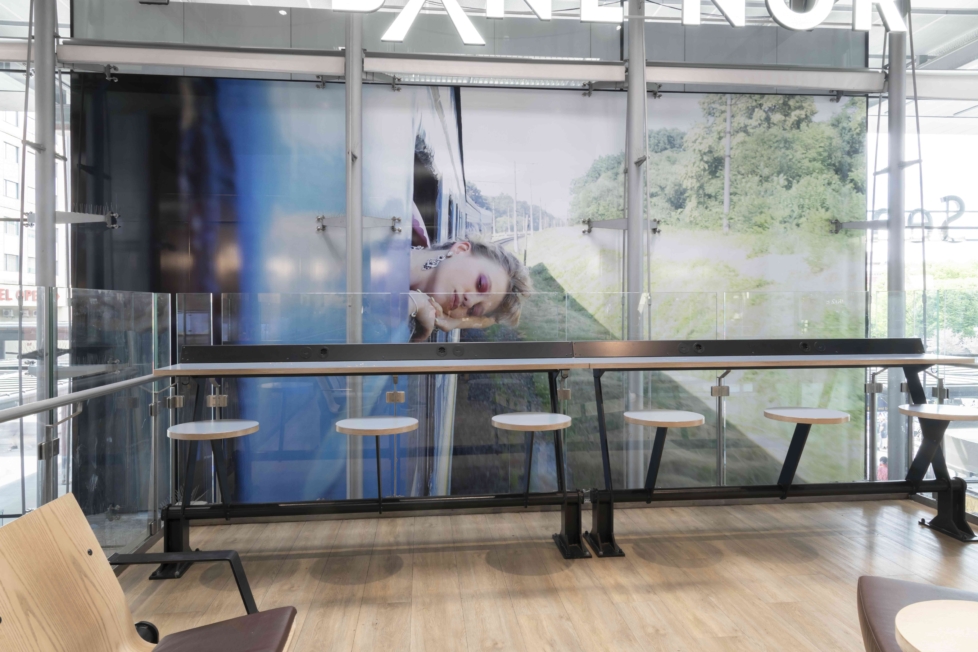
In June, photographs by Ukrainian photographer Julie Poly appeared at Ski Station, Oslo Airport, and Oslo Central Station, as part of Norway’s government agency for railways Bane NOR’s art commissions at selected railway stations. By the end of September, seven more artworks will be presented at the new Drammen Station, with the installation set to remain on view for a year. The photographs are part of a project Poly has been working on since 2017, titled Ukrzaliznytsia – named after the Ukrainian railway.
In Ukrzaliznytsia, documentary photography and staged scenarios are combined in a project originally informed by the artist’s experience of working as a train conductor and her encounters with the microcosm of the Ukrainian train compartments. In interviews about the project, the artist has expressed that she wanted to capture the distinctive atmosphere she came to know on the tracks, which to her felt both intimate and erotic. For Poly, the work had initially come to a close, but after Russia’s invasion she felt compelled to return to it. When the airspace over Ukraine was shut down, the railway became vital for transporting both passengers and goods. For Ukrainians, it has also come to symbolise the country’s resilience: the train keeps running, no matter what.
Some of Poly’s photographs exhibited in the Norwegian train stations predate the invasion, while others were taken afterwards. The eroticism that was prominent at the beginning of the project gives way, in this summer’s selection, to a more finely tuned sense of longing. In the Airport Express terminal at Oslo Central Station, travelers encounter, among other works, Portrait of Lena. Lviv–Ivanofrankivska (2017–2019), a photograph measuring around 5 by 10 metres. It depicts a woman leaning out of a moving train framed by a green landscape. Potentially ready to party, she has painted nails, substantial diamond earrings, and heavily made-up eyelids. At the same time, her gaze is dulled – perhaps she is drowsy after the night’s exertions, or thinking of a lover.
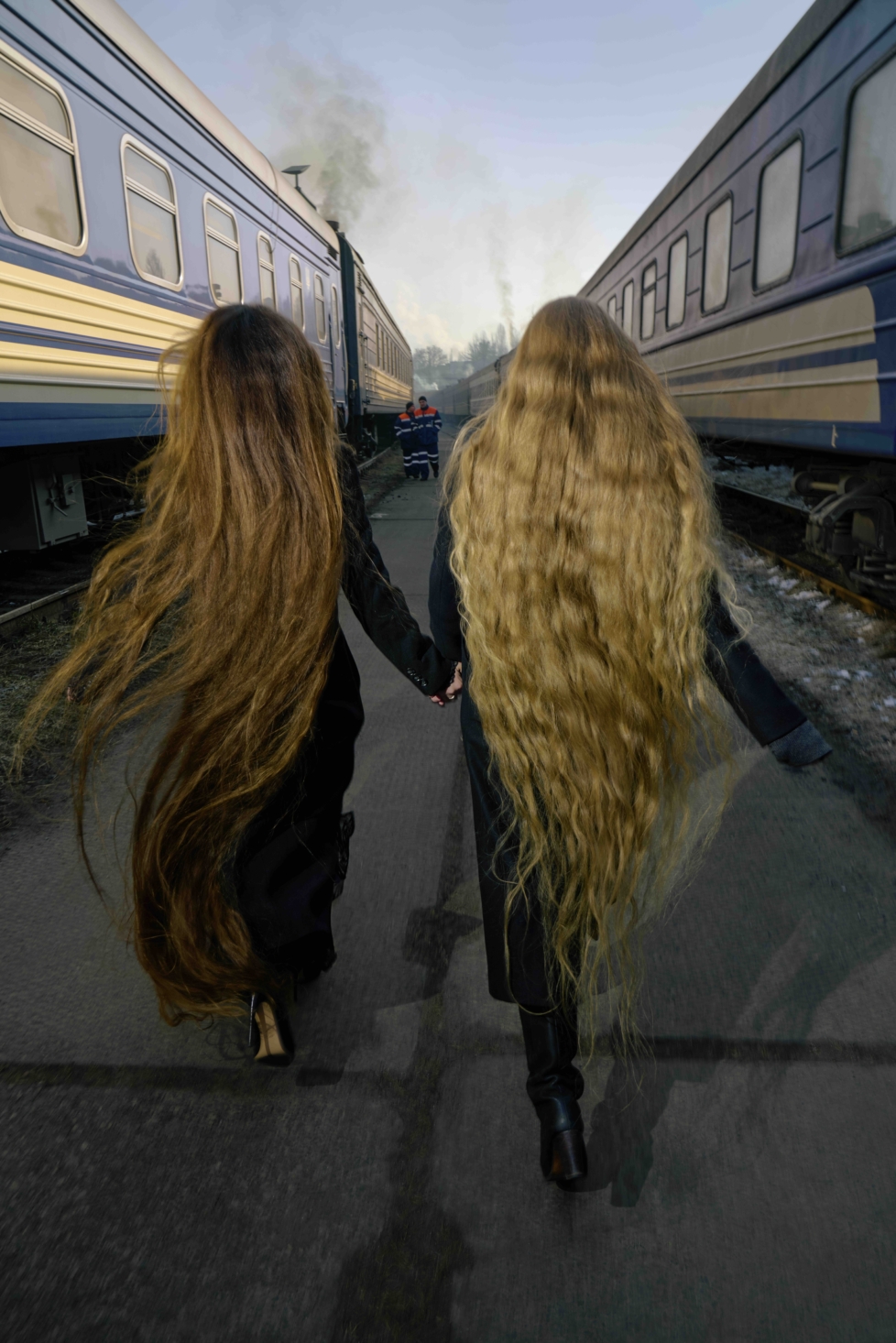
Outside, on the other side of the wall, an even larger photograph is mounted. In the ten-metre-high Aliona & Olena. Meeting Eight Years Later (2025), two women dressed in black and wearing stiletto heels stand close together in what appears to be a railway yard. Their gleaming hair almost reaches the ground, with only a fragment of one woman’s face visible. There is an intimacy, though not necessarily a romantic one, between the two figures, who seem almost to merge into one another. I imagine them as friends or sisters, long separated and now reunited.
The photograph of Aliona and Olena is also exhibited at Ski Station alongside two other works that reference the ongoing war. In Non stop (2025), a woman and a man in military uniform embrace, with two cans of energy drink at their feet. In Lana and Maria Saying Goodbye (2025), two women share a passionate kiss – one dressed in civilian clothes, the other in uniform, with a bouquet of sunflowers tucked into her pocket. A long-standing Ukrainian symbol of peace, the sunflower’s presence in Poly’s photograph strikes me as a nod to the fact that several battles are being fought in Ukraine at once, including those over identity politics. During the war, support for the country’s queer community has grown, both as a response to Russian President Vladimir Putin’s aggression towards the group, and in recognition of the role that queer people have played in defending the country.
At Oslo Airport, two photographs are mounted on the concrete pillars along the platform where the local train arrives, and an additional two on the platform towards the city centre. Here, Lana and Maria’s goodbye is paired with a pre-war image, Sonya and Misha (2017–2019). In it, a man wearing a backwards camouflage cap leans out of a train window to kiss a smiling woman in a short miniskirt and red fishnet stockings. The flirtatious ease of this image contrasts with Lana and Maria’s intense farewell, and between the pillars Poly captures the moment when play turns into something more serious.
It requires some effort to take in everything in this edition of Ukrzaliznytsia. Eight photographic prints are presented in various configurations across the stations mentioned, and to see them all you have to board the train yourself. In addition, a series of images appears on three digital screens around Oslo Central Station featuring photographs of two train drivers, the interior of medical train carriages, and a row of ambulances lined up on a platform, waiting for the wounded to arrive from the front. This stream of images, in which death seems to lurk just around the corner, is the most confrontational part of the project, with a particular tension arising at the screen with the dreamlike portrait of Lena visible behind.
When several of Poly’s photographs are brought together in this way, both their singular and collective narratives emerge. At Ski Station, Lana and Maria appear not only as a couple longing for each other, but – through the intimate resonance of the other images – as part of a longing people. In Poly’s project, that longing emerges, in a wider sense, as a unifying and assertive force.
